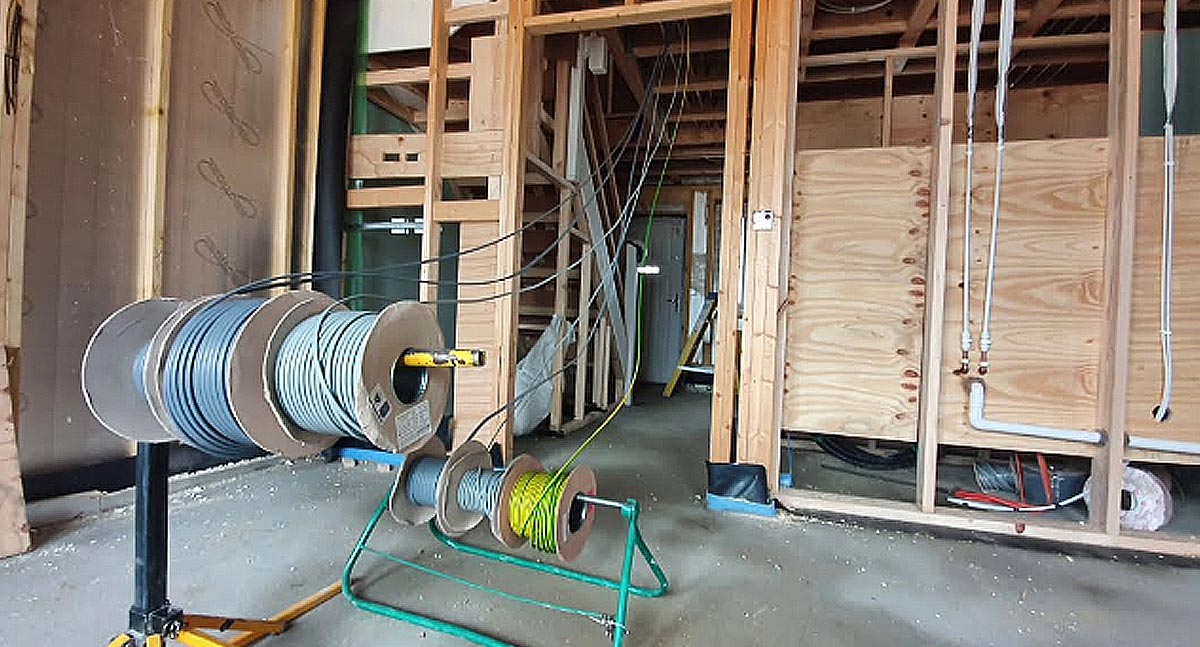Tailored BRE Electrical Solutions for Residences and Organizations
Tailored BRE Electrical Solutions for Residences and Organizations
Blog Article
The Ultimate Overview to Electric Setup: Tips and Methods for a Safe and Efficient Home Wiring System
In the realm of home upkeep, couple of facets are as vital yet commonly ignored as the electric circuitry system. By discovering the nuances of electric security procedures and energy-saving practices, this detailed guide will certainly lose light on the ins and outs of home circuitry, empowering individuals to take fee of their home's electrical framework.
Comprehending Electric Safety Actions
To guarantee the safety and security of both people and property, understanding and executing correct electrical safety and security procedures is vital in any type of home circuitry task. It is important to conduct a thorough examination of the electrical system prior to beginning any circuitry task to determine prospective risks or issues that need to be resolved.
Moreover, utilizing the appropriate tools and tools is necessary for maintaining security throughout electric installations. Insulated gloves, voltage testers, and protective glasses are a few of the standard safety equipment that ought to be worn to avoid electrical shocks or crashes. It is likewise essential to de-energize circuits prior to dealing with them and to identify all circuits and breakers plainly to stay clear of complication.

Vital Tools for Home Circuitry
Ensuring the proper application of electric safety and security actions in home circuitry jobs includes making use of a details collection of essential tools designed to help with the setup procedure properly and safely. Some of the key devices required for home electrical wiring tasks include a voltage tester for examining online cords, cable strippers for getting rid of insulation from wires, a cord cutter for exactly cutting wires to length, a screwdriver established for securing electrical elements, electrical tape for insulation and protecting connections, a cable ripper for removing wire sheathing, and a multimeter for measuring voltage, present, and resistance.
Step-by-Step Electrical Installation Overview
Beginning an electric setup project calls for meticulous preparation and adherence to safety and security standards. Before beginning any type of work, ensure you have a thorough plan describing the layout of the electrical system, including the placement of electrical outlets, switches, and fixtures. Take into consideration the power requirements of each tool to determine the appropriate cable scale and circuit breaker dimensions.
The very first step in the setup procedure is to turn off the power supply to the area where you will certainly be working. Utilize a voltage tester to verify that the circuits are de-energized prior to touching any kind of cords. Next, thoroughly remove existing components or electrical outlets and separate the cables.
When setting up brand-new electrical wiring, run wires via walls and ceilings, securing them in position with suitable fittings. Comply with regional structure codes and supplier guidelines for proper cord setup and links. BRE Electrical Solutions. Make sure to classify cables for very easy recognition and future upkeep

Troubleshooting Common Circuitry Issues
Having actually finished the installation procedure as visit the website outlined in the previous subtopic, repairing usual wiring issues is an important ability for making certain the safety and functionality of your electric system. One common problem is a tripped circuit breaker, frequently brought on by overloaded circuits or a short circuit. To troubleshoot this, locate the breaker panel, identify the tripped breaker by seeking the one not fully in the "on" position, and reset it by flipping it completely to "off" and over at this website after that back to "on." Another widespread trouble is a faulty outlet, defined by no power or intermittent power supply. Guarantee the outlet is not regulated by a switch, after that make use of a voltage tester to look for power. If there is no power, turn off the circuit, evaluate the electrical wiring connections for any kind of loosened or damaged cables, and change the electrical outlet if necessary. Continually flickering lights can indicate loose wiring links or an overloaded circuit. To resolve this, check and tighten up all cable links in the influenced components and switches and rearrange the lots on the circuit to stabilize the electrical need. Frequently checking and promptly addressing these common electrical wiring problems will keep the safety and effectiveness of your home electrical system.
Tips for Energy-Efficient Electric Equipments
For optimum power effectiveness in electric systems, implementing smart practices and utilizing energy-saving modern technologies is critical. One essential pointer for accomplishing an energy-efficient electric system is to upgrade to LED lights. Correct insulation and sealing of windows, doors, and electric outlets can also prevent power loss, ultimately lowering the workload on electrical systems.
Conclusion
In verdict, implementing correct precaution, making use of important devices, complying with a detailed installment overview, troubleshooting typical issues, and including energy-efficient suggestions are essential for a secure and efficient home electrical wiring system. By adhering to these methods, homeowners can ensure the durability and capability of their electrical installations. It is very important to prioritize safety and efficiency when it concerns electric work in order to avoid prospective threats and to maintain a trusted electric system visit this web-site in the home.
Report this page